Reviewing the hit documentary, a story of community
Lydia Smith’s documentary, Walking the Camino, was released in 2013 and depicts modern pilgrims on a path toward Santiago that men, women, and children have taken since medieval times. The film has won myriad awards, including Best Documentary at the Hollywood Film Festival. It tells a story of questions and answers, blisters and heartache, and community and inspiration. The Nanovic Institute sponsored a viewing of the documentary on January 28 at the DeBartolo Performing Arts Center’s Browning Cinema.
Walking the Camino follows 6 pilgrims, from a small child frequently carried down the road by his mother, to an elderly man who walks with his elderly friend. Each pilgrim has a different reason for walking the Camino, yet each of the stories holds a relatable charm to it that makes the documentary particularly alive and relatable.
The documentary’s website states: “Our film will speak to young viewers in the process of self-formation, offer a way for retirees and mid-lifers to reflect on their past and possibilities for their future, and encourage our disabled population to think beyond their limits. Rather than merely entertaining with mental diversion, the film will engage its audience in an active rumination on their own lives.”
One young man seeks simply to get into shape. Another pilgrim walks the Camino in memory of his deceased wife. A third is striving to create motion in her life after several trials have left her feeling stuck.
Many of these pilgrims find each other along the way, supporting each other, feeding each other, and resisting the constant urge to be competitive. The physical and mental challenges the trip presents, along with the spiritual challenges the religious pilgrims face, seem nearly insurmountable as the audience watches the nearly-500-mile journey unfold. The film does an excellent job portraying the many tribulations of those who walk toward Santiago.
Throughout these trials, the pilgrims find solace in solidarity with others on the road. Many along the road assist the mother traveling with her three-year-old son. One woman tearfully recounts how a stranger helped her carry her pack. Pilgrims share food, find company, and establish relationships along the journey.
This sense of community was not meant to be confined to the 6 individuals in the film. According to the film’s website, “Our documentary, just like the Camino itself, will create this sense of global community and spark a dialogue about life’s biggest questions. Amidst a time of considerable social malaise, Walking the Camino will illuminate what enables us to transcend the perceived boundaries of race, language, social status, age, faith and nationality, and remind us of what is best about being human.”
This is not the first time this topic—along with its sense of community and inspiration to the higher questions—has come to Notre Dame. In 2011, the Nanovic Institute screened The Way, a film about a father and son walking the Camino. Martin Sheen and Emilio Estevez, the stars of the film, attended the screening and spoke to the nature of Notre Dame’s interest in the film.
A September 19, 2011, Observer article quotes Estevez as saying, “We think you guys get it. We think that you guys will get the themes of the film … This campus celebrates faith and community, and that is really what this movie is all about.”
While the Nanovic Institute sponsored both showings of The Way and Walking the Camino, Notre Dame’s interest in the pilgrimage does not stop there.
In 2011, the Rover published an article by Kelsey Clemson, reflecting on her experience walking the Camino. She wrote of her companions on the journey: “The three of us agreed on the profound sense of community and compassion among the pilgrims. Simply being on the [Camino] together knit us into a family.”
The Notre Dame Glee Club took a tour of Spain in May 2013 that included an 87-mile walk on the Camino. The group even sang at the traditional Pilgrim’s Mass at the Cathedral of Santiago de Compostela, where the pilgrimage ends. In July 2013, the blog for WalkND, a fitness initiative by RecSports, featured posts from an employee who walked the Camino as part of her commitment for WalkND. Over fall break in 2013, 15 students and two professors from Notre Dame spent a week on the Camino as part of a class entitled “The Art and History of the Road to Santiago de Compostela.”
Articles about all of these trips allude to the sense of community that they fostered. Walking the Camino also emphasizes this theme. It ends by showing two pilgrims who met each other on the journey reflecting on their experiences as they stare out over a cliff. The audience is left with the distinct impression that the Camino brings people together through shared experiences and a sense of contemplation through journeying. The documentary impresses upon us that after all, that is the purpose of the pilgrimage and the effect of a buen camino.
Abigail Bartels is a junior living in Badin Hall. If you use her name as a search term, you will discover that Google and Goodreads both think she is the author of “Julius Caesar.” Sorry, Shakespeare. Contact her at abartel2@nd.edu.
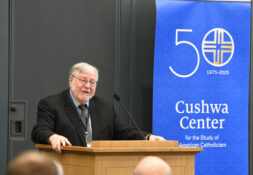
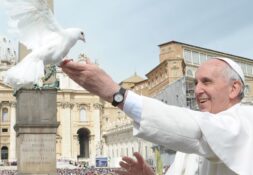
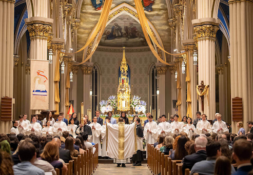
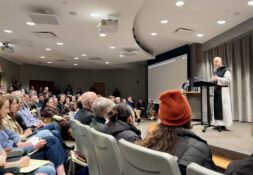
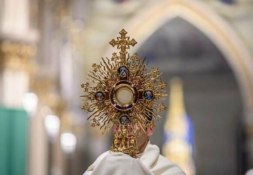

Leave a Reply